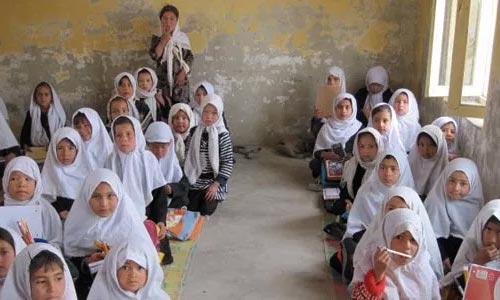No one doubts that fundamental reform in Afghanistan is not possible unless strategic investment on education. This means education is the first determining factor to propel the country towards sustainable development; so we need to change the mindset of the whole generation of this country through a big educational project and put education in the top priority when making the national budget plan. Nothing makes us a united nation unless we get rid of ignorance and enrich our lives with understanding to peace, prosperity, and dignity. It improves the quality of lives and leads to broad social benefits to individuals and society. Education raises people’s productivity, creativity and also promotes entrepreneurship and technological advances. Overall, it plays a very crucial role in securing social progress and reaching economic development.
In World War II, a number of countries were more successful in reconstruction of their countries than others, because they had better human capital while other remained broke and poor because they lacked educated human capital. For example, Japan’s education system played a central part in Japan’s recovery and rapid economic growth in the decades following the end of World War II. Legally, education is compulsory at elementary and lower secondary levels in Japan. As a result, they have got ZERO illiteracy rate and is considered as a strong world economic power.
In the other word, there are two complimentary factors, human capital and financial capital, which can gear a nation towards socioeconomic development; while either type of capital could have been the factor limiting investment in the other type of capital. However, there are some variations in the relative amounts of the two types of capital, but no country has high levels of only one type. For example, the U.S. has more educated human than financial capital, while Japan has more financial than human capital, but both countries have high levels of both. Similarly, studies show that economic development does not occur automatically. If it did, there would not be such large differences in the magnitude of the capital stocks between countries. There are also some other characteristic(s), which is not available in the less developed countries. It is also evident that whatever these characteristics are, they vary widely across countries because levels of capital/adult vary widely.
Therefore, it is the educational system that undertakes to provide human capital through basic and higher educational systems; while private financing of this type of investment is not feasible for poor children. Countries that are highly developed today have a long history of providing free or highly-subsidized education to the poor. A review of their history suggests that the initial motivation for schooling had a religious basis, but that as the public’s level of education and income rose, their demand for schooling rose, and the financial support from private donors was replaced or greatly augmented with public funds. If poor countries wish to achieve high levels of national income, they need to provide public funding for the universal education of the poor, at least at the primary and secondary levels of schooling.
The current educational system of Afghanistan is not responsive to educational needs of the country, because there is a wide gap between the quality of the Afghan education system comparing to regional and global standards. There are many factors but the root factor is lack of enough budgets or enough salary; as a result, education or educators have the lowest prestige in our society. That’s why the talented or the university graduated talents are not willing to become teachers, and only weak and jobless will get the teaching job. Based on this, it is easy to conclude if we have weak teachers, the result is to have weak generation; if we have strong teachers we would have strong generations. Furthermore, female school instructors just constitute about 30 percent of teachers nationwide. Afghan girls face many obstacles when it comes to their education, including early marriage, security conflicts, and inaccessibility to nearby schools. As a result, only 9.2 percent of girls reach secondary school, compared to 28 percent of boys.
Quantitatively, Afghanistan is still one of the countries where many school-age children have no access to schooling. According to the UN Children’s agency (UNICEF), a large portion of the children living in conflict zones are deprived of schooling, with ranking the fourth worst-affected countries after South Sudan, Niger, Sudan. And a staggering 40 percent of school-age children are out of school in Afghanistan. It is obviously when children are not in school they are at an increased danger of abuse, exploitation, and recruitment into armed groups. Conflict and fragile security impedes delivery of school supplies, enrolment, monitoring, and school supervision these challenges are exacerbated by entrenched tribal norms that oppose the education of girls.
Finally, without investment in quality education, the future of the country looks dark; in fact, there is no way to end from poverty unless we put education at the top of national priorities. It is possible to change the whole generation within 17 other years and it is considered as the best way to reach sustainable peace and development. Therefore, we have to make it an obligatory duty through national constitution aiming to reach zero illiteracy level in the future. Meanwhile, education for girls is not less important than boys; we need to eliminate the barriers and any illusions that keep girls deprived of education. Thus, we must acknowledge that when a girl is educated, a small community will be educated, but when a boy is educated, just an individual is educated.
Home » Opinion » Simple Dose of Solution to Rescue a Nation
Simple Dose of Solution to Rescue a Nation
| Mohammad Zahir Akbari

